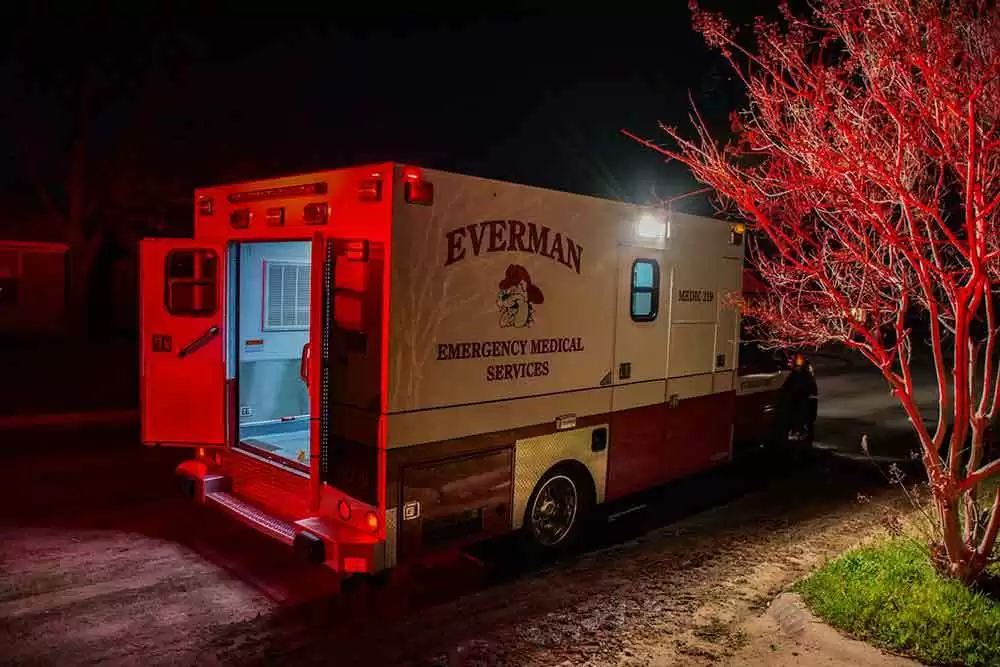
Celiac.com 05/13/2022 - It all began when Dr. Malawer called. “Good news,” he said! “We found out what’s causing your symptoms. The tests confirmed you have celiac disease” (Gastroenterologists, he explained, rarely find definitive causes for their patients’ intestinal complaints; hence his excitement). “What this means is that you’ll have to be on a strict gluten-free diet for the rest of your life—no wheat, no rye, no barley, no oats. And no cheating—you have to stick with the diet 100 percent! But let me warn you that once get the gluten out of your system and start absorbing your food you may gain weight. I had one patient who gained 50 pounds in three months!”
Dr. Malawer was elated. I was depressed. Give up bread—for the rest of my life? It seemed a sentence too cruel for someone whose favorite food, second only to fruit, was the staff of life! Tearing into a long loaf of French bread fresh from Marvelous Market and slathering it with butter was one of my favorite pastimes. I could eat the whole thing in one sitting. And what about the six-grain loaves and the Jewish ryes (with seeds, please) from Breads Unlimited where I shopped every Saturday morning? And oh my God, bagels! Big fat garlic bagels, onion bagels, cinnamon bagels, poppy seed bagels right out of the oven from Whatsa Bagel, and the flatbread bagels smothered with onions and poppy seed called bialys—never again? This was seriously depressing.
Celiac.com Sponsor (A12):
Dr. Malawer had suspected celiac disease (also known as gluten intolerance) and ordered a biopsy of my small intestine and blood tests when, in taking my family history, he learned that I had a third cousin with the disease and that when I was very young I had heard my parents mention the possibility of celiac disease when discussing the cause of my many food allergies with my pediatrician.
My symptoms had begun at least ten years prior to my diagnosis. I had frequent bouts of abdominal distress, gas, and diarrhea, which I could not associate with anything in my diet. I frequently talked with my internist about this, and for about a year I kept a daily journal on the state of my abdomen and what I had done or eaten, but no pattern emerged. Over that time period several sigmoidoscopies were performed and they repeatedly tested me for parasites and giardia—all test results were negative. The only thing we could figure out was lactose intolerance. When I went on a lactose-free diet or used lactose pills my distress lessened, but the diarrhea continued. My doctor finally told me that if I had another bout of diarrhea he would refer me to a gastroenterologist. That is how I became a patient of Dr. Malawer’s.
While trying to absorb the news about my diagnosis of celiac disease and its implications, I asked Dr. Malawer if there were any organizations that could help me with the dietary and life style changes that I’d need to make. His receptionist directed me to the Washington Area Celiac Sprue Support Group (WACSSG), which meets bimonthly and puts out a highly informative newsletter about all aspects of the disease that includes gluten-free recipes and listings of gluten-free products available in local supermarkets or by mail. To my surprise, WACSSG’s membership of adults, children, and families of celiacs was more than 100 when I joined about 12 years ago, at a time when the disease was thought to be relatively rare. Membership has been increasing with heightened awareness of the true prevalence of the disease in the United States—about 1 in 133 Americans and 1 in 22 family members of diagnosed celiacs, according to a recent epidemiologic study.
The first meeting of WACSSG I attended featured a speaker from the FDA (Food and Drug Administration) on hidden glutens found in the “fillers” of prescription and over the counter drugs. Fillers are the non-therapeutic ingredients used as binders. She urged us to contact the manufacturer of each drug we were taking to find out what substances they used as fillers. Certain fillers were not acceptable, and we needed to find out whether they came from corn, potatoes, or wheat, and of course avoid taking drugs with wheat starch fillers. What a tedious process! Not only was it almost impossible to read the fine print containing the ingredients and the manufacturer’s phone number (if listed) on a bottle of antihistamines or my prescription drugs, but when I called the manufacturers I was cycled through numerous “experts” on the abstruse matter of fillers before I got my answer. Fortunately, in most cases, the fillers were made of corn or potato starch and I was able to continue using the drug. In some cases, however, the type of starch used as filler varied from batch to batch, as the manufacturers competed on the open market for the lowest priced ingredients. If the manufacturer could not guarantee that wheat starch was never used, I could not take the drug.
Aside from the obvious things I could no longer buy for myself, such as bread and wheat pasta, I had to learn, first and foremost, to read the ingredient labels on every food item I intended to eat. I was surprised to learn how many canned, bottled, and packaged food items contain wheat or oats, or barley. Wheat, in particular, seems to be ubiquitous. In a long list of ingredients, it is not atypical to find the words “wheat starch” toward the end, even in such products as soups and chicken broth, catsup, and soy sauce. Hidden glutens, I was to learn, lurked everywhere!
Once I got over the shock of the diagnosis (an autoimmune disorder, which can manifest itself at any age) and stopped focusing on all those things I could no longer eat, I became aware of excellent gluten-free packaged products, cookbooks, and recipes for breads and baked goods which I could easily prepare. Among my first purchases was a “Zo” (Zojirushi) bread machine, which is particularly effective with gluten-free flours, such as white and brown rice flour, potato flour, tapioca flour, and cornstarch, to which xanthan or guar gum can be added to provide the elasticity which is lost when gluten-containing flours such as wheat cannot be used.
A perennial challenge for celiacs, however, is eating in restaurants or dining with friends in their homes. I’m still shocked at the number of waiters who don’t realize that noodles, at least in this country, are typically made from wheat flour. What they lack in knowledge, however, they are usually quite willing to ask about in the kitchen. If they cannot find out whether or not a particular soup or meat dish I’m contemplating contains any gluten, I choose something else. On the other hand, some restaurants, such as Bonefish Grill (I just recently discovered), can provide a diner with a gluten-free menu; and some stores, such as Trader Joe’s, have a list of all the gluten-free products that they carry.
When I eat out with friends or acquaintances, I tell them that the only kind of restaurant I really have to avoid is a pizza joint. My solution to eating in other people’s homes is to bring a dish I can eat to share with others. I tell the cook to prepare whatever they want for the guests and not to worry about me. Usually there are some things I can eat and some I can’t. To my surprise and pleasure, after I became gluten-free I was able to tolerate dairy products—including milk, yogurt, and most cheeses—quite well.
Whenever people start eating something I can’t eat in my presence, they usually apologize when it dawns on them that I can’t have it. I am now able to say, “It’s OK. I remember exactly what that tastes like and I’m getting vicarious enjoyment watching you eat it.” Sometimes I’ll take a plate of frosting from a chocolate cake, or scrape out the innards of a cheesecake that is coated with graham cracker crumbs (once I’ve verified that the innards contain no gluten). But then there’s the fresh bread…that’s when I have to look away!
A celiac always needs to be thinking about emergency foods, particularly sources of carbohydrates or high energy foods for travel, in case one cannot count on gluten-free products being available, such as at airports, train stations, or in foreign countries. I travel with Balance Bars (not advertised as gluten-free, but they are in fact), raw almonds, raisins, and hard-boiled eggs, or corn chips. I keep a couple of Balance Bars in my car at all times, in case I’m on the road and become hungry. One Balance Bar can usually forestall the need for a meal until I arrive home or at my destination.











Recommended Comments
Create an account or sign in to comment
You need to be a member in order to leave a comment
Create an account
Sign up for a new account in our community. It's easy!
Register a new accountSign in
Already have an account? Sign in here.
Sign In Now